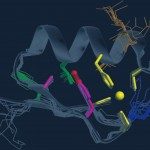Lien vers Pubmed [PMID] – 26923600
Cell Rep 2016 Mar;14(9):2263-72
Genome editing has now been reported in many systems using TALEN and CRISPR-Cas9 nucleases. Precise mutations can be introduced during homology-directed repair with donor DNA carrying the wanted sequence edit, but efficiency is usually lower than for gene knockout and optimal strategies have not been extensively investigated. Here, we show that using phosphorothioate-modified oligonucleotides strongly enhances genome editing efficiency of single-stranded oligonucleotide donors in cultured cells. In addition, it provides better design flexibility, allowing insertions more than 100 bp long. Despite previous reports of phosphorothioate-modified oligonucleotide toxicity, clones of edited cells are readily isolated and targeted sequence insertions are achieved in rats and mice with very high frequency, allowing for homozygous loxP site insertion at the mouse ROSA locus in particular. Finally, when detected, imprecise knockin events exhibit indels that are asymmetrically positioned, consistent with genome editing taking place by two steps of single-strand annealing.

